We met Helen Hiebert back in the early ’90s, in SoHo, NYC at Dieu Donné Papermill , and have since watched her blossom into truly a paperwoman extraordinaire.
In our conversation below, we discuss handmade paper with Helen, who has cultivated a solid reputation as an educator, artist, writer and champion of the art of paper. Enjoy her musings on handmade paper, altitude, and insight on her techniques, as well as what new paper goodies she is offering this time of year!
PCI: What first attracted you to papermaking?
HH: The fact that I could make paper from the ground up. I was involved in a community garden in NYC when I first learned to make paper at Dieu Donné Papermill, so I was learning about growing plants for the first time. When I discovered papermaking, I was intrigued by the fact that I could grow and make the raw material, and then continue working with it by making art.
PCI: Would you say your approach to papermaking is more scientific or do hope to achieve a certain aesthetic goal? Do you aim to create your papers as a base for your artwork?
HH: To answer the first part of that question, I think I do both: I have an experimental approach to working with abaca – testing its strength and ability to become translucent and shrink in relation to various things I interject into the process (embedding string and wire for example, or nailing wet sheets to a board, thus interrupting and altering the drying process). But when I am working on a particular project, like Mother Tree or The Wish, I do have an aesthetic goal, and I choose from my reportoire of techniques to order achieve these goals. And to answer the second part of the question: I do not see myself as making papers as a base for my work but as the material that I’m most likely to work with.
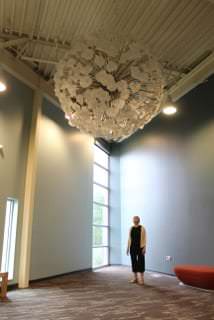
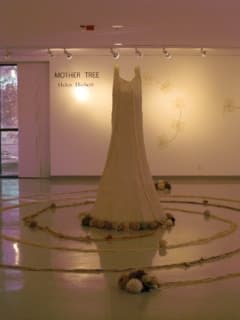
PCI: How have traditional Asian papermaking methods influenced your papermaking?
HH: A trip to Japan in the late 1980’s inspired my interest in handmade paper. I saw handmade papers in shops and was struck by the light filtering through the traditional shoji screens at the inn where I was staying. This was not a paper trip, but rather a trip to visit my father who was working in Japan, so it was purely inspirational. But that trip became the beginning of my career! Upon my return to NYC where I was living, I began looking for ways to return to Japan to learn papermaking. I remember visiting an out-of-the-way bookstore and purchasing Sukey Hughes book “Washi“, and I think I purchased Tim Barrett’s book around that time. When I was researching ways to travel to Japan (i.e. an income stream) I discovered Dieu Donné Papermill and volunteered there for a short time. Then I became Program Director and worked there for six years. I never went back to Japan (not yet at least) and I learned all about Western papermaking and creative papermaking techniques.
PCI: We absolutely love this video of children learning papermaking at Dieu Donné, as featured on Sesame Street! Spot Helen @ 00:25, 00:39, and 1:47. The other artist is Robbin Ami Silverberg, who now runs her own papermill in Brooklyn.
PCI: How has your growing knowledge of papermaking influenced how your work has evolved?
HH: I’m not sure this is an answer to your question, but I would expand it to include all of the paper arts. I have a fascination with graphic design and product design, and I’m always looking at materials and products and thinking about how they might translate in paper. I’m also obsessed with techniques that other artists are discovering, and I don’t think that the potential of paper has been fully explored. I’m more concerned with expressing my ideas through paper (and other materials) rather than expanding my knowledge of papermaking, although I’m certainly influenced by what I see and discover.
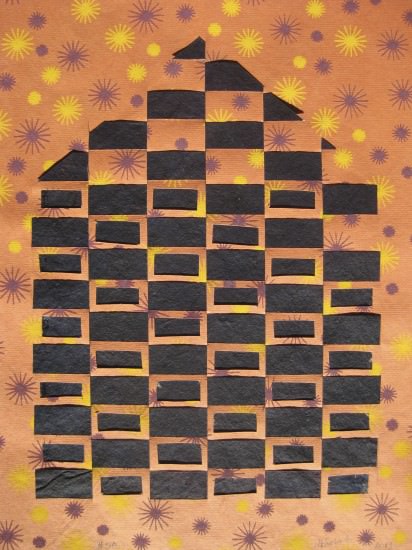
PCI: You recently moved from Portland, Oregon, to Colorado. How has the water, altitude, and all around general move affected your papermaking and work?
HH: People told me my work would change when I moved, but I’m not sure that it has significantly. Part of this might have to do with the fact that most of my projects take years to realize. I’ve also moved a lot, so perhaps that is just part of my being. I miss the artist community I developed in Portland, and my paper dries much quicker here in Colorado.
PCI: You recently completed a trip to Europe. What were some highlights? Anything that would find its way incorporated into your next pieces?
I taught a workshop and lectured at the Papierwespe in Vienna. Beatrix Mapalagama, the owner, has a great little business in Vienna, providing workshops in all facets of paper. I enjoyed the time I spent with her as well as the teaching.
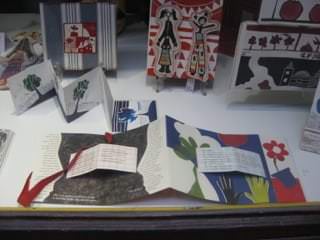
And it was a treat to visit Fabriano in Italy –to see all of the historic equipment and watermarked papers and to participate in the IAPMA (International Association of Hand Papermakers and Paper Artists) Congress. Jocelyn Chateavert gave a demonstration which sparked several new ideas for working with abaca. I was also able to visit Roberto Mannino’s studio in Rome as well as his permanent paper installation at the Graphic Institute in a building right above the Trevi Fountain. It is wonderful to be able to share time, stories and ideas with other artists who work in similar ways.
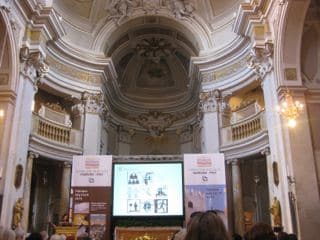
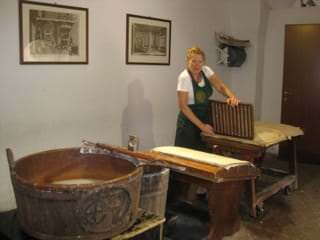
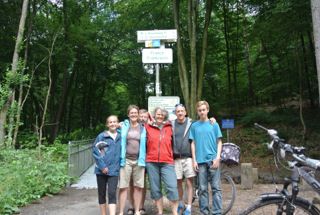
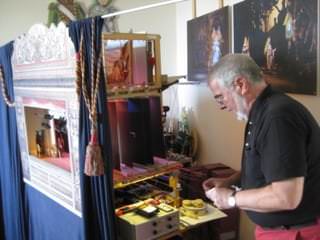
PCI: Do you prefer making paper, working with paper, writing, or teaching? What aspects of each of these do you enjoy?
HH: Good question! Part of this has to do with making a living. Years ago, I looked at my income to see which of these areas was most profitable. And you know what? It was pretty even across the board. That told me two things: 1: I could choose one direction and put all of my energy there; or 2: I could continue to have several income streams. I really enjoy each of these facets and think that they play well off of each other. Sometimes I make myself tired because I can’t turn off the ideas. Lots of them go by the wayside, and others stick. This keeps me ticking.

PCI: We are certainly glad you keep active in all fields, and keep those ideas coming! Which artist(s), past or present, would you like to have a conversation with? What would you say about paper?
HH: I’d have to say Eva Hesse, and I would discuss our shared fascination with materials, among other things. I’ve always thought that she would have loved paper… and she lived really close to Dieu Donné, (although it wasn’t there yet – she died in 1970 and it was founded in 1976). I sometimes fantasize about how we walked along the same streets of New York.
PCI: What is next for Helen Hiebert?!?
Per Helen’s blog, she posts this:
“A quick heads-up: next Friday through Sunday (11/28 – 12/1) I’m offering FREE SHIPPING on everything you find on my website. Playing With Paper Kits, How-to books, DVDs and art. It will be almost like you’re here shopping in my studio!”
Don’t miss out on this opportunity!
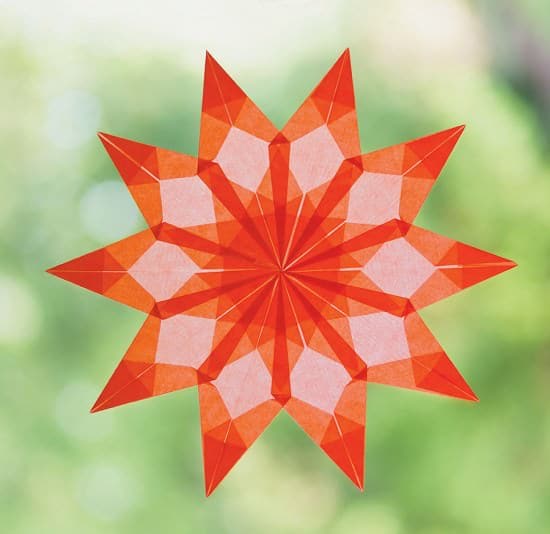
Earlier in the year, Helen published a wonderful blog about Paper Connection. We are so pleased to be collaborating more with Helen this year and re-developing a deeper paper relationship between us.
For more on Helen Hiebert, please visit the following:
Website: http://helenhiebertstudio.com/
Blog: http://helenhiebertstudio.com/blog/
Facebook: https://www.facebook.com/HelenHiebertStudio

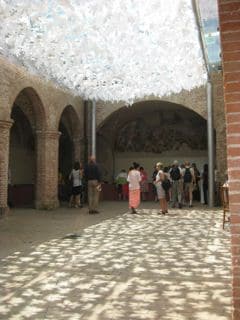
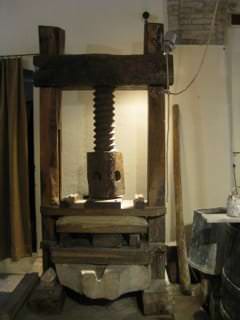
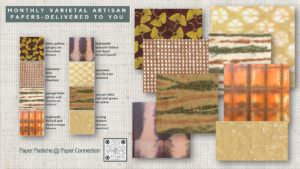
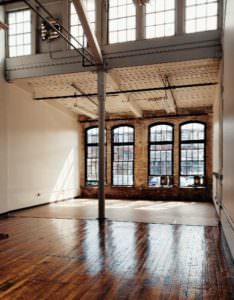
1 comment
Susan Potter
Love Paperwoman! Cannot wait to click all the links— they always make me feel as if I am actually traveling. All the best, Susan
Sent from my iPad Susan Potter
>